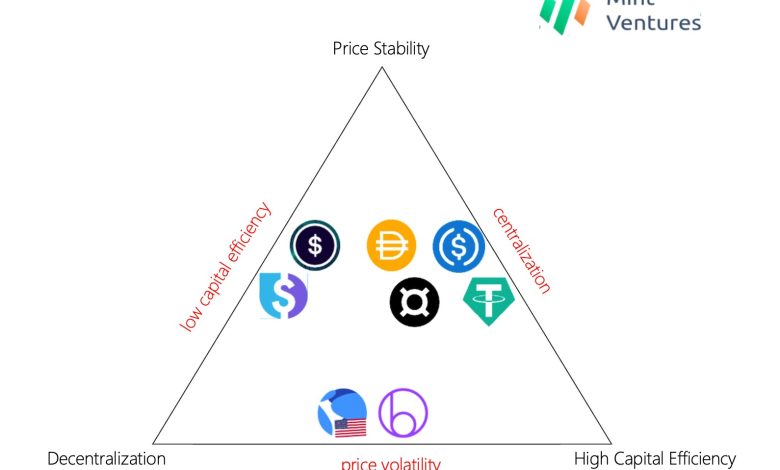The Role of Stablecoins in Risk Management

- Understanding Stablecoins and their role in risk management
- The benefits of using stablecoins for mitigating financial risks
- How stablecoins can provide stability in volatile markets
- Exploring the relationship between stablecoins and risk management strategies
- Case studies: Successful implementation of stablecoins in risk management
- Future outlook: The evolving role of stablecoins in risk mitigation
Understanding Stablecoins and their role in risk management
Stablecoins play a crucial role in risk management within the cryptocurrency market. These digital assets are designed to maintain a stable value by pegging them to a reserve asset, such as a fiat currency or a commodity. By providing a reliable store of value, stablecoins help investors mitigate the volatility commonly associated with cryptocurrencies.
One of the key benefits of stablecoins in risk management is their ability to act as a safe haven during times of market turbulence. When the value of other cryptocurrencies fluctuates wildly, stablecoins remain relatively stable, providing investors with a secure asset to park their funds. This can help protect investors from sudden market crashes and preserve the value of their investments.
Furthermore, stablecoins can also be used as a hedging tool to manage risk in cryptocurrency trading. By holding a portion of their portfolio in stablecoins, investors can offset potential losses from other volatile assets. This diversification strategy helps reduce overall portfolio risk and provides a more stable return on investment.
The benefits of using stablecoins for mitigating financial risks
Using stablecoins can provide numerous benefits when it comes to mitigating financial risks. These digital assets are pegged to a stable asset, such as a fiat currency or a commodity, which helps to reduce the volatility typically associated with cryptocurrencies. This stability makes stablecoins an attractive option for investors looking to hedge against market fluctuations and preserve the value of their assets.
One of the key advantages of using stablecoins for risk management is their ability to facilitate quick and cost-effective transactions. Unlike traditional banking systems, which can be slow and expensive, stablecoins allow for near-instantaneous transfers of funds across borders at a fraction of the cost. This can help businesses and individuals mitigate counterparty risk and reduce exposure to potential financial losses.
Furthermore, stablecoins offer a level of transparency that is often lacking in traditional financial systems. Because stablecoins are built on blockchain technology, all transactions are recorded on a public ledger that is accessible to anyone. This increased transparency can help to reduce the risk of fraud and improve trust between parties involved in a transaction.
How stablecoins can provide stability in volatile markets
Stablecoins play a crucial role in providing stability in volatile markets. These digital assets are designed to maintain a steady value by pegging them to a reserve asset, such as a fiat currency or a commodity like gold. This pegging mechanism helps to mitigate the extreme price fluctuations that are common in the cryptocurrency market, making stablecoins an attractive option for investors looking to manage risk.
By using stablecoins, investors can protect their portfolios from the wild price swings that often characterize cryptocurrencies. When the market is experiencing turbulence, stablecoins offer a safe haven where investors can park their funds without having to worry about losing value. This stability can help to reduce overall portfolio risk and provide a sense of security during uncertain times.
Furthermore, stablecoins can also be used as a medium of exchange for trading digital assets. By using stablecoins as a trading pair, investors can quickly move in and out of positions without having to convert back to fiat currency. This can help to streamline the trading process and reduce transaction costs, making it easier for investors to navigate volatile markets.
Exploring the relationship between stablecoins and risk management strategies
Exploring the connection between stablecoins and risk management strategies is crucial in understanding how these digital assets can be utilized to mitigate potential financial risks. Stablecoins, as their name suggests, are designed to maintain a stable value by being pegged to a reserve asset such as a fiat currency or a commodity. This stability makes them an attractive option for risk management purposes, as they can act as a safe haven during times of market volatility.
One way in which stablecoins can be used for risk management is through their role as a hedge against market fluctuations. By holding a portion of a portfolio in stablecoins, investors can protect themselves from sudden price swings in other assets. This can help to reduce overall portfolio risk and provide a level of stability in uncertain market conditions.
Furthermore, stablecoins can also be used as a means of diversification within a portfolio. By including stablecoins alongside other assets such as stocks, bonds, and cryptocurrencies, investors can spread their risk across different asset classes. This can help to minimize the impact of any single asset’s poor performance on the overall portfolio.
Case studies: Successful implementation of stablecoins in risk management
Several case studies have demonstrated the successful implementation of stablecoins in risk management strategies. These examples showcase how stablecoins can effectively mitigate various risks in different industries:
- 1. **E-commerce**: A major online retailer integrated stablecoins into its payment system to reduce currency exchange risks when dealing with international customers.
- 2. **Real Estate**: A property development company used stablecoins to streamline transactions and minimize volatility risks associated with traditional fiat currencies.
- 3. **Supply Chain**: A global logistics firm adopted stablecoins to facilitate cross-border payments and hedge against currency fluctuations.
- 4. **Investment**: A hedge fund incorporated stablecoins into its portfolio to diversify risk exposure and enhance liquidity management.
These case studies highlight the versatility and effectiveness of stablecoins in managing risks across various sectors. By leveraging the stability and security of stablecoins, businesses can optimize their risk management strategies and improve overall financial resilience.
Future outlook: The evolving role of stablecoins in risk mitigation
The future outlook for stablecoins in risk mitigation is promising as these digital assets continue to play an evolving role in managing financial uncertainties. Stablecoins, with their pegged value to fiat currencies, provide a stable store of value in times of market volatility. This stability makes them an attractive option for investors looking to hedge against risks in traditional markets.
One key advantage of stablecoins is their ability to facilitate faster and more efficient cross-border transactions. By leveraging blockchain technology, stablecoins offer a secure and transparent way to transfer value across borders without the need for intermediaries. This can help reduce counterparty risks and streamline the settlement process, ultimately enhancing risk management practices.
Furthermore, stablecoins can also serve as a valuable tool for diversifying investment portfolios. By holding a portion of assets in stablecoins, investors can mitigate risks associated with market fluctuations and currency devaluations. This diversification strategy can help protect against potential losses and provide a more stable return on investment over time.
As the regulatory landscape around stablecoins continues to evolve, their role in risk mitigation is likely to become even more prominent. Regulators are increasingly recognizing the importance of stablecoins in ensuring financial stability and are working to establish clear guidelines for their use. This regulatory clarity will help boost confidence in stablecoins and encourage their adoption as a reliable risk management tool in the future.
In conclusion, the evolving role of stablecoins in risk mitigation presents exciting opportunities for investors and businesses alike. By harnessing the stability, efficiency, and diversification benefits of stablecoins, stakeholders can better navigate the complexities of today’s financial markets and position themselves for long-term success. As the use of stablecoins continues to grow, their impact on risk management practices is expected to become increasingly significant.



